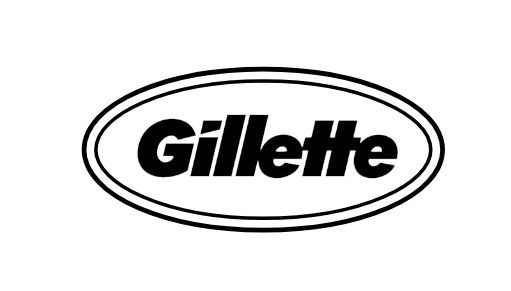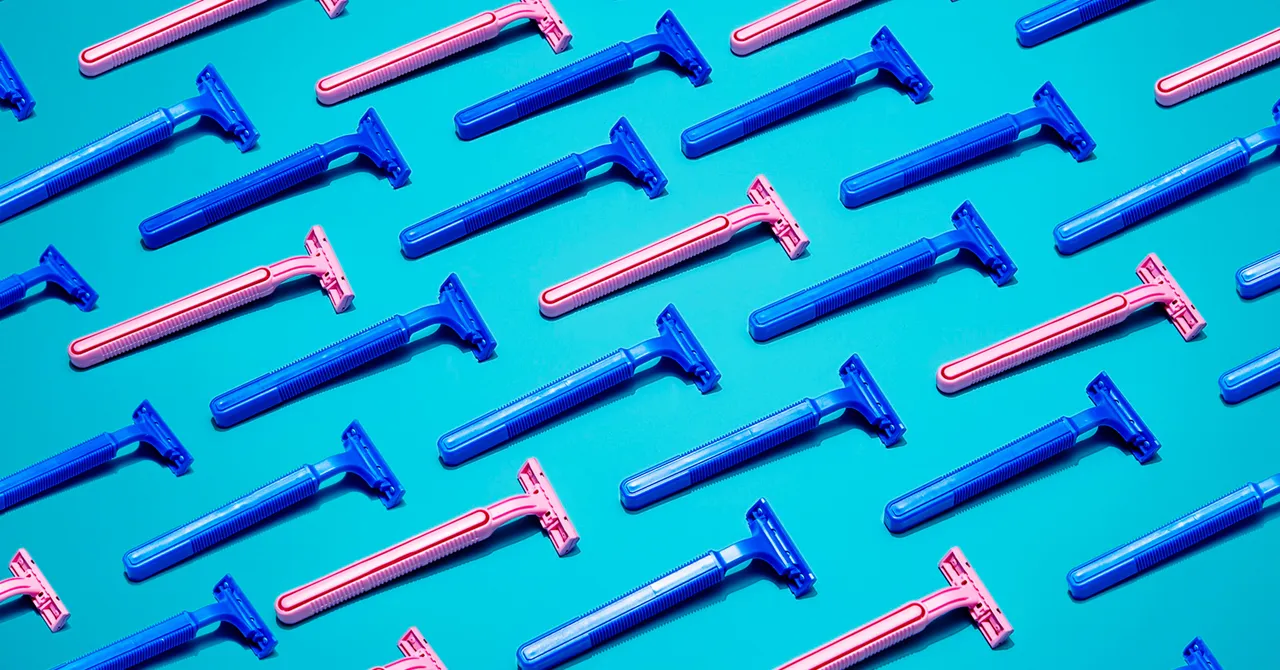
For more than 120 years, Gillette has pulled off something truly impressive: they’ve managed to persuade men that shaving every day isn’t just about keeping clean, but it’s a vital part of being a man. With slogans like “The Best a Man Can Get” and the more controversial “The Best Men Can Be,” Gillette has skillfully navigated the tricky world of marketing to men, all while the very idea of what it means to be masculine is changing around them.
The Challenge: How do you sell razors in a world where beards are all the rage, subscription services are shaking up your business model, and your usual masculine messaging feels a bit out of touch? Gillette’s recent journey is a fascinating case study in both marketing genius and some strategic blunders.
For many years, Gillette’s marketing strategy was refreshingly straightforward: they linked their razors to athletic prowess, professional achievements, and classic masculine values. By sponsoring major sports events and high-profile athletes, they crafted a brand that became synonymous with the pinnacle of male performance. It was testosterone-driven marketing at its most effective.
Gillette pioneered the brilliant strategy of practically giving away razors to sell high-margin replacement blades. Their marketing had to convince consumers that superior shaving required continuous blade upgrades – essentially turning a commodity purchase into a subscription mindset decades before Dollar Shave Club existed.
Gillette has always positioned technological innovation as a symbol of masculine progress. Each new blade count, comfort strip, or precision trimmer became evidence of male sophistication. They turned small product tweaks into significant lifestyle enhancements by using smart marketing strategies.
This iconic slogan represented peak masculine aspiration marketing. Gillette’s advertisements went beyond just promoting razors; they were all about inviting you into a special club of successful, attractive, and confident men. The messaging was aspirational yet attainable – any man could achieve “the best” through proper grooming choices.
Gillette’s decision in 2019 to tackle toxic masculinity was seen by some as a bold step forward for the brand, while others viewed it as a risky move that could backfire. The campaign took a hard look at outdated masculine stereotypes but still held onto its central message about what it means to be a good man. It was purpose-driven marketing that generated massive buzz – and massive backlash.
Gillette really shines when it comes to blending traditional advertising with digital engagement, influencer collaborations, and hands-on marketing experiences. Their campaigns flow effortlessly from Super Bowl ads to lively social media discussions, fostering ongoing brand engagement across various platforms.
Gillette faces the unique challenge of marketing to multiple generations of men simultaneously:
The “We Believe” campaign offered some valuable insights into purpose-driven marketing. It highlighted that being authentic is more important than just the message itself, that a brand’s actions need to reflect its values, and that social commentary can stir up both loyalty and dissent at the same time.
Rather than retreating from their messaging, Gillette maintained their position while adjusting tactics. They demonstrated that controversial marketing requires commitment to the underlying brand evolution, not just campaign-level messaging.
Gillette showcases a few important ideas: the strength of associative marketing, the hurdles of adapting a brand in divided times, and the necessity of grasping audience segmentation when tackling sensitive issues.
Their journey illustrates that effective marketing often involves taking well-thought-out risks, even if those risks come with considerable backlash.
Analyzing complex brand positioning challenges like Gillette’s? StudyCreek offers comprehensive resources for students tackling controversial marketing campaigns and brand evolution case studies.
Need deeper academic support with your marketing coursework and strategic brand analysis projects? DissertationHive provides expert assistance for students navigating challenging case studies and marketing crisis management theories.

Sample Assignment:
Gillette has successfully convinced the world that more is better in terms of number of blades and other razor features. How did they do it? Why has that worked in the past? Will it continue to work in the future? Why, or why not? Will Gillette ever become as successful at marketing to women as to men? Why, or why not?
Why have Gillette’s sports marketing partnerships been so successful in developing their brand equity?
Some of Gillette’s spokespeople such as Derek Jeter and Tiger Woods have run into controversy after becoming endorsers for the brand. Does this hurt Gillette’s brand equity or marketing message? Explain.
Discuss the effectiveness of their overall marketing campaign including advertising, personal selling, promotion, events, and public relations strategies.
Recommend next steps for Gillette with respect to their marketing and advertising strategies.
Sample Answer:
Gillette’s Marketing Strategy: Blades, Branding and Beyond
Student Name
Course Title
Instructor
Date
Gillette has established itself as a frontrunner in men’s grooming by persuading consumers that “more is better.” Their advertising campaigns have consistently spotlighted innovation, showcasing the perks of extra razor blades, lubricating strips, and ergonomic designs. This approach has historically paid off, tapping into consumers’ cravings for efficiency, comfort, and a touch of prestige. By presenting shaving as both a necessity and a modern masculine ritual, Gillette has cleverly linked product performance to self-image.
Consumer preferences are definitely changing. A lot of men are starting to wonder if having more blades really means a better shave, especially with brands like Dollar Shave Club and Harry’s pushing for simplicity and affordability. While Gillette has had success in the past by focusing on tech upgrades, its future will hinge on finding the right balance between innovation, transparency, and keeping prices reasonable.
When it comes to marketing to women, Gillette has encountered some unique hurdles. While products like Venus have made a bit of a splash, the brand hasn’t quite managed to win over female consumers in the same way it has with men. This could be because many see women’s razors as just repackaged versions of men’s products, but with a steeper price tag. To really connect, Gillette needs to focus on genuine storytelling that speaks to women’s grooming needs, rather than just tweaking strategies that are aimed at men.
Gillette’s approach to sports marketing has played a key role in building its brand reputation. By sponsoring major sports events and teaming up with athletes like Derek Jeter and Tiger Woods, the brand has associated itself with values like performance, confidence, and success. However, some controversies surrounding these figures have posed risks to its reputation. While these issues didn’t completely derail Gillette’s message, they did reveal the risks of leaning too much on celebrity endorsements. Nowadays, consumers tend to prioritize authenticity over celebrity status, which suggests that Gillette might want to tread carefully with future partnerships.
Gillette’s marketing efforts—spanning advertising, promotions, and public relations—have done a solid job of keeping the brand at the forefront. However, it’s time for the brand to adapt. The next steps should involve using data analytics to get a better grasp on changing consumer habits, prioritizing sustainability in product design, and enhancing inclusivity in their campaigns. By moving away from just the “more blades” message and embracing authenticity, affordability, and gender balance, Gillette can stay relevant and boost its brand equity in the fast-evolving grooming market.
Delivering a high-quality product at a reasonable price is not enough anymore.
That’s why we have developed 5 beneficial guarantees that will make your experience with our service enjoyable, easy, and safe.
You have to be 100% sure of the quality of your product to give a money-back guarantee. This describes us perfectly. Make sure that this guarantee is totally transparent.
Read moreEach paper is composed from scratch, according to your instructions. It is then checked by our plagiarism-detection software. There is no gap where plagiarism could squeeze in.
Read moreThanks to our free revisions, there is no way for you to be unsatisfied. We will work on your paper until you are completely happy with the result.
Read moreYour email is safe, as we store it according to international data protection rules. Your bank details are secure, as we use only reliable payment systems.
Read moreBy sending us your money, you buy the service we provide. Check out our terms and conditions if you prefer business talks to be laid out in official language.
Read more